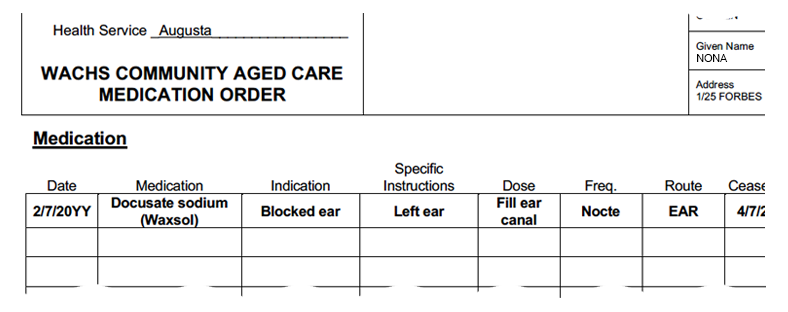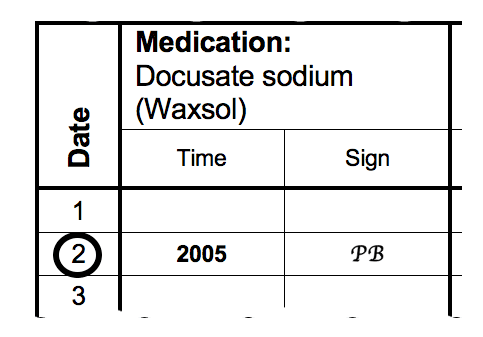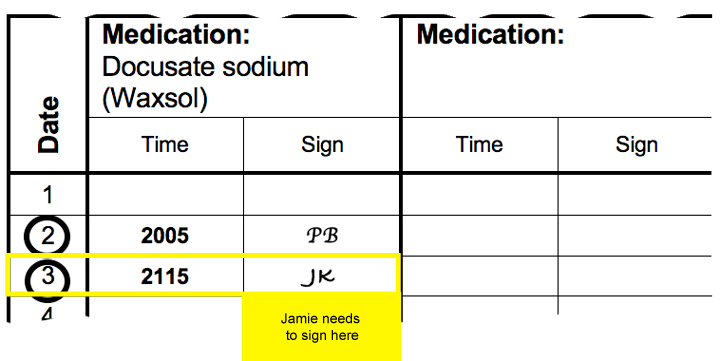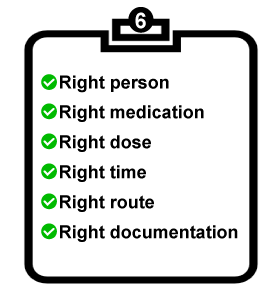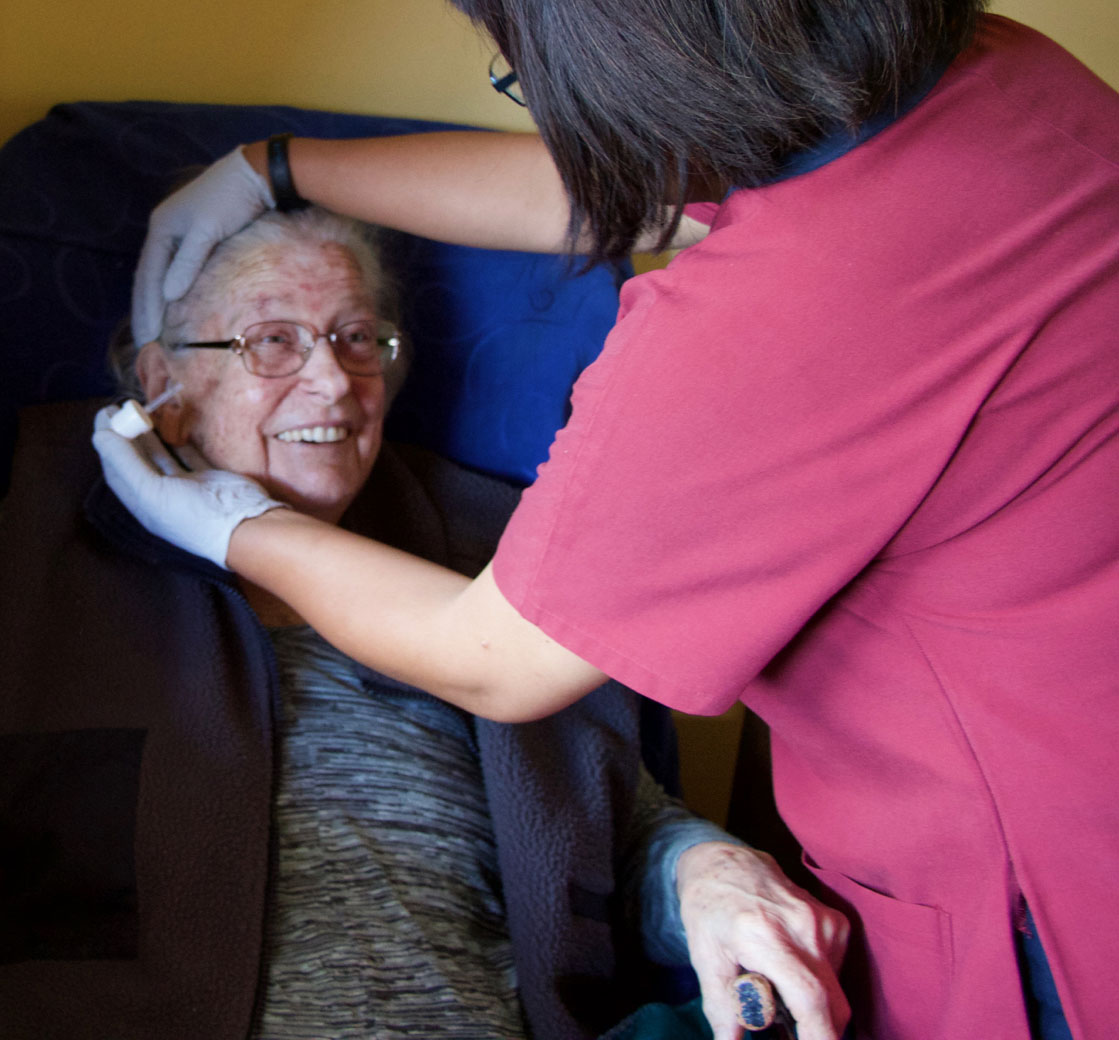Nona
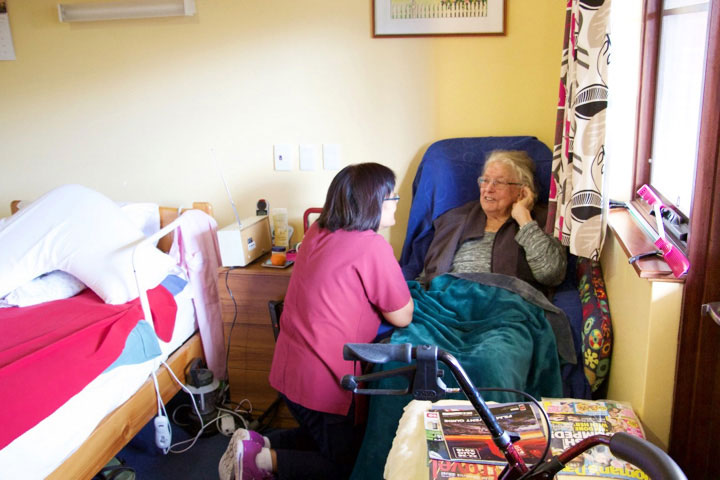
Jamie leaves Sunshine Village and goes to see Nona at her home.
Nona
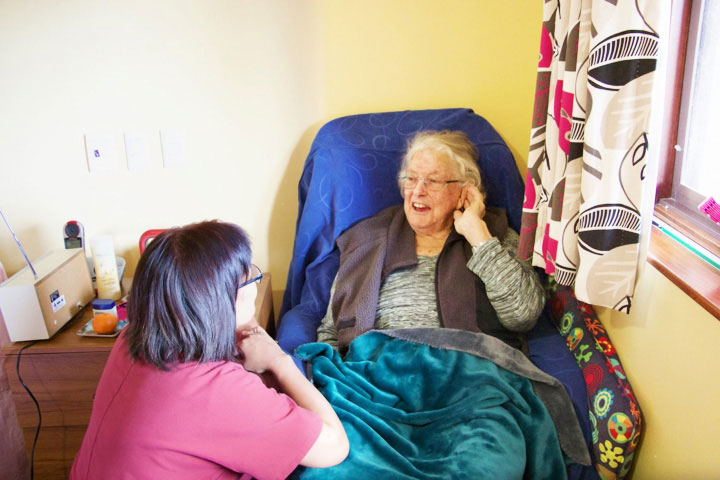
Jamie speaks up a bit.
Check for any signs of deterioration
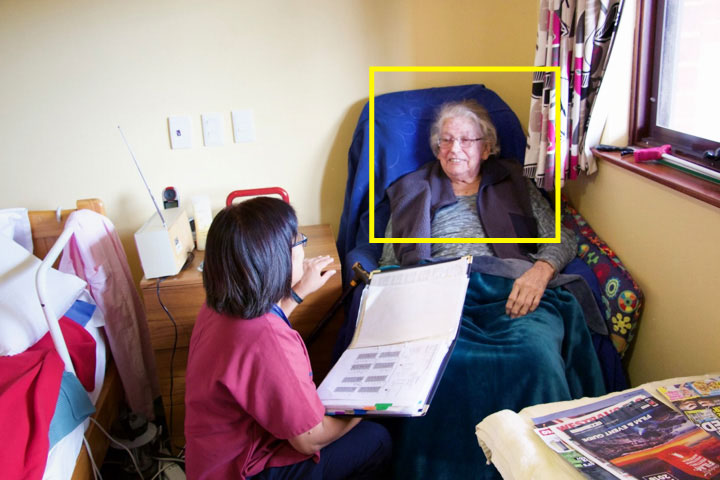
Jamie keeps an eye out for any changes to Nona's appearance or behaviour.
Click Nona to see how she responds.
Right person

Jamie checks Nona's photo and name on her identity form.
Click the folder to see Nona's identity form.
Do the details match what's written on the form?
Right time
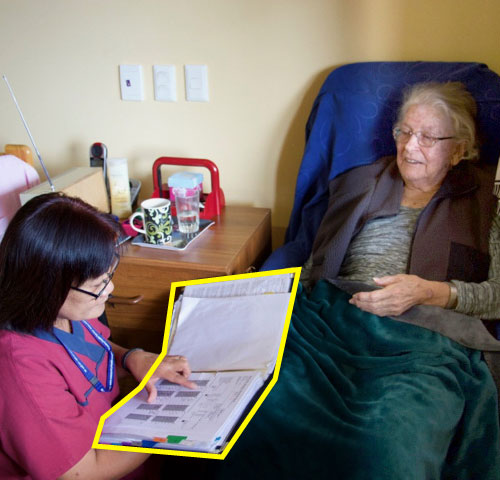
Jamie checks Nona's medication order.
Click the medication order Jamie is looking at.
At what time of the day do Nona's ear drops need to be given?
Medication order errors
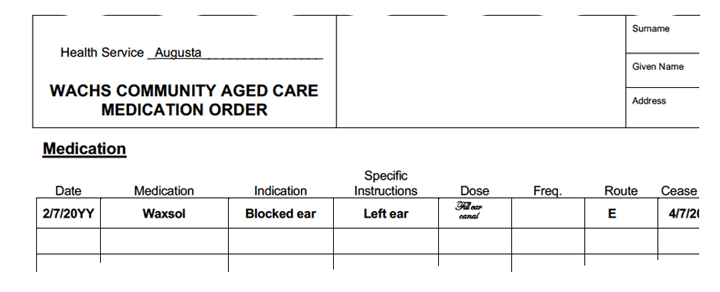
- The brand name has been used instead of the generic name
- The dose has been written in cursive writing. This can make orders hard to read.
- The frequency is missing.
- Client's details have not been completed.
- The route is not clear. 'E' could mean ear or eye.
Here is another medication order for a different client. There are some problems with this order.
Can you identify the five problems?
Right dose

Jamie checks Nona's medication record.
Click the medication record Jamie is holding.
If today is Tuesday 3rd July 20YY, when did Nona receive her last dose?
Right medication
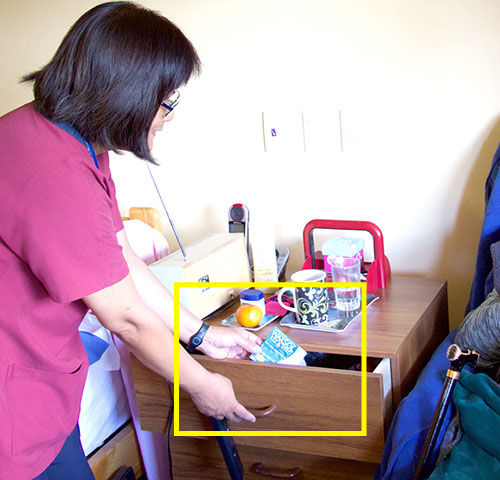
Jamie takes the ear drops from the medication storage area.
Click the ear drops to have a look.
Are these drops OK for Nona to use?
Medication expiry
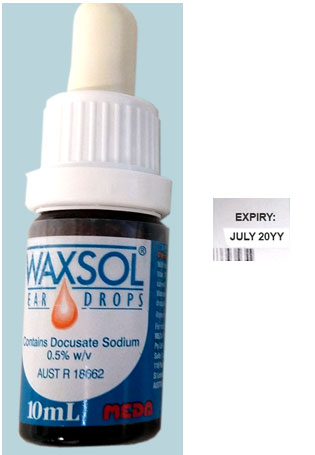
What to do if medication has expired.
Nona's ear drops expire in July this year. This means they expire on the last day of that month (on the 31st July).
What should Jamie do before these ear drops expire?
Hand hygiene

Jamie performs hand hygiene and prepares to give Nona the ear drops.
Consider infection control principles if required.

Five steps to assist with ear medication
Jamie is now ready to give Nona her ear drops. Follow the steps for giving ear medication.
Step 1
Identify the correct ear. Ask the person to tilt their head or lie on their side.

Five steps to assist with ear medication
Step 2
Unscrew the lid of the ear drops and fill the dropper from the bottle.
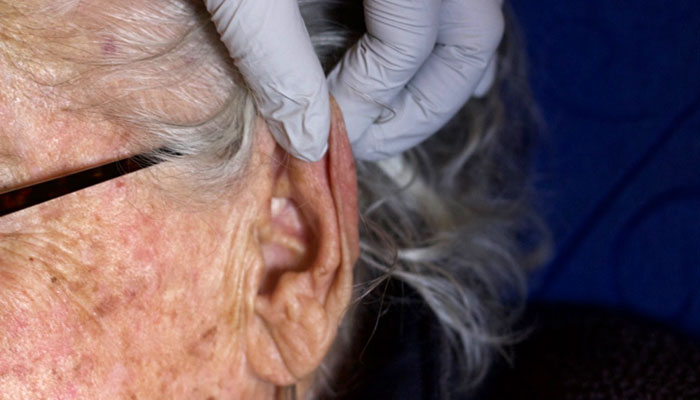
Five steps to assist with ear medication
Step 3
Gently draw the ear upwards and backwards to straighten the ear canal.

Five steps to assist with ear medication
Step 4
Gently squeeze the dropper over the client's ear until a drop of liquid falls into their ear.
Make sure the dropper does not touch the ear.

Five steps to assist with ear medication
Step 5
Ask the client to remain in position for a while to give the drops enough time to enter the ear canal.
Nona is startled
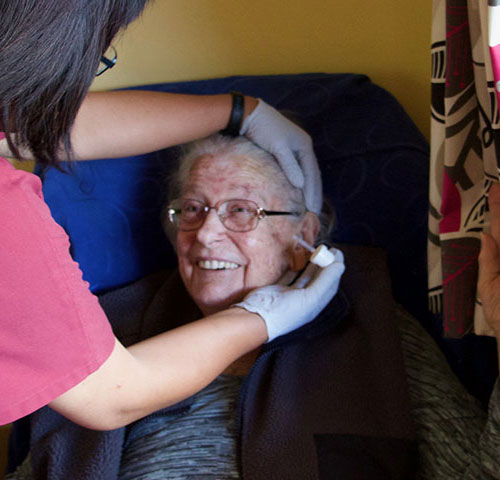
Nona is startled when Jamie puts the drops in her ear.
A couple of drops miss Nona's ear and fall on to her cheek.
What should Jamie do?
Jamie removes her gloves
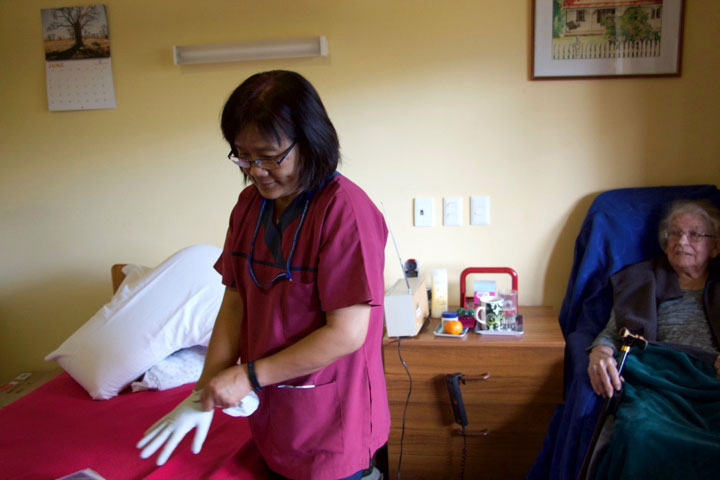
Jamie continues to give Nona the ear drops and then removes her gloves.
Right documentation
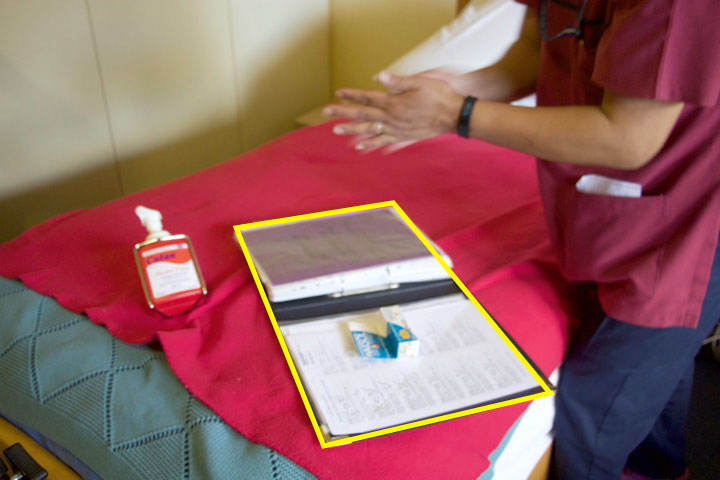
She performs hand hygiene again and signs the medication record.
Click the document to see where Jamie needs to sign it.
Jamie leaves the room
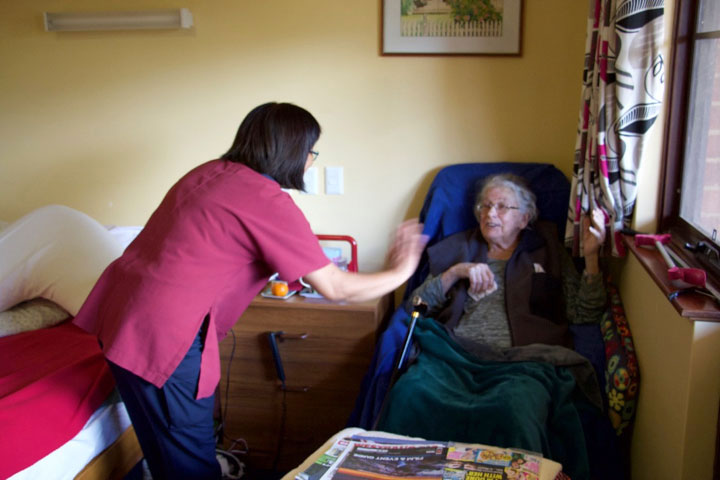
Jamie puts the ear drops back. She performs hand hygiene again and says goodbye to Nona.
You are now ready to start your assessment for this case study.
Question 1
Nona's ear drops are to be administered at night.
How would this be written on her medication order?
Question 2
Take a close look at the medication order.
Is there enough information about the medicine for it to be administered safely?
Question 3
What is the best thing to do if you notice that a medication order is missing some essential information?

Question 4
Nona's ear drops expire in July 20YY. Today is the 15th July 20YY.
Are the drops OK to use?
Question 5

Some ear drops like Waxsol require you to completely fill the ear canal.
Which part of the ear should you press to make sure ear drops completely fill the ear canal?
Click your mouse (or tap) on where you would press the ear.
Congratulations
Congratulations
You have successfuly completed Medication Assistance (For the Unregulated Health Care Worker) - Ear medication (MAURf EL2).
You can now close this tab and start PRN Pain medication when you are ready.
You can now start the next module: PRN Pain medication when you are ready.
You might also like to:
- Explore the resources and further reading;
- Complete the short evaluation of the module - your feedback is appreciated; or
- Launch and complete the reflective practice activity tool - your feedback is appreciated; or
- Restart this module
 Tips for ear drops
Tips for ear drops


